Gauge house Westerland
Where Wadden Sea, the former island of Wieringen and the Amsteldiepdijk meet stands a mysterious slender building, contrasting sharply with mudflats, water and sky. This lonely cottage is a reminder of the Zuiderzee Works, which made the island of Wieringen part of the mainland of North Holland.
After the great storm surge of 1916, when parts of Waterland and the Anna Paulowna polder flooded, the decision was made in 1918 to close off the Zuiderzee with a dike. Wieringen would be connected to the mainland by a dike through the Amsteldiep and then through the Afsluitdijk with Friesland. This would lead to higher water levels in the part of the Zuiderzee that remained open.
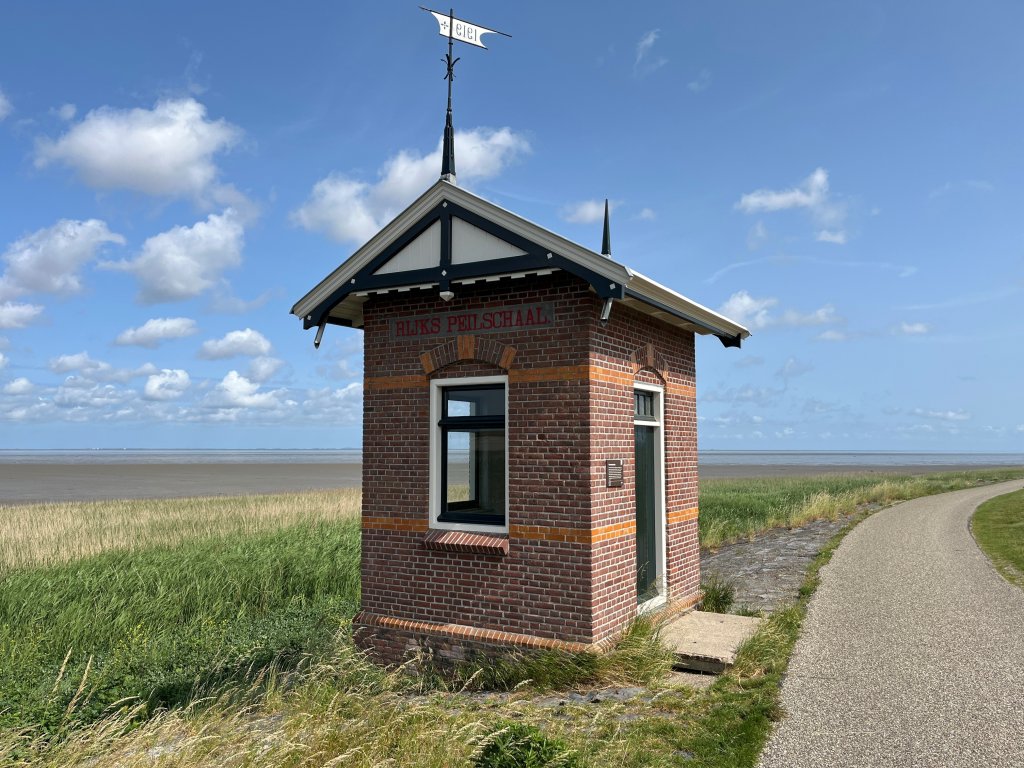
To investigate the water levels and wave run-up in the northern Zuiderzee area, the Zuiderzee State Commission was appointed, headed by the famous physicist and Nobel laureate Hendrik Lorentz (1853-1928), after whom the locks at Kornwerderzand are named. At various locations in the Zuiderzee area, gauges were to be placed to collect data on the height the sea water reached.
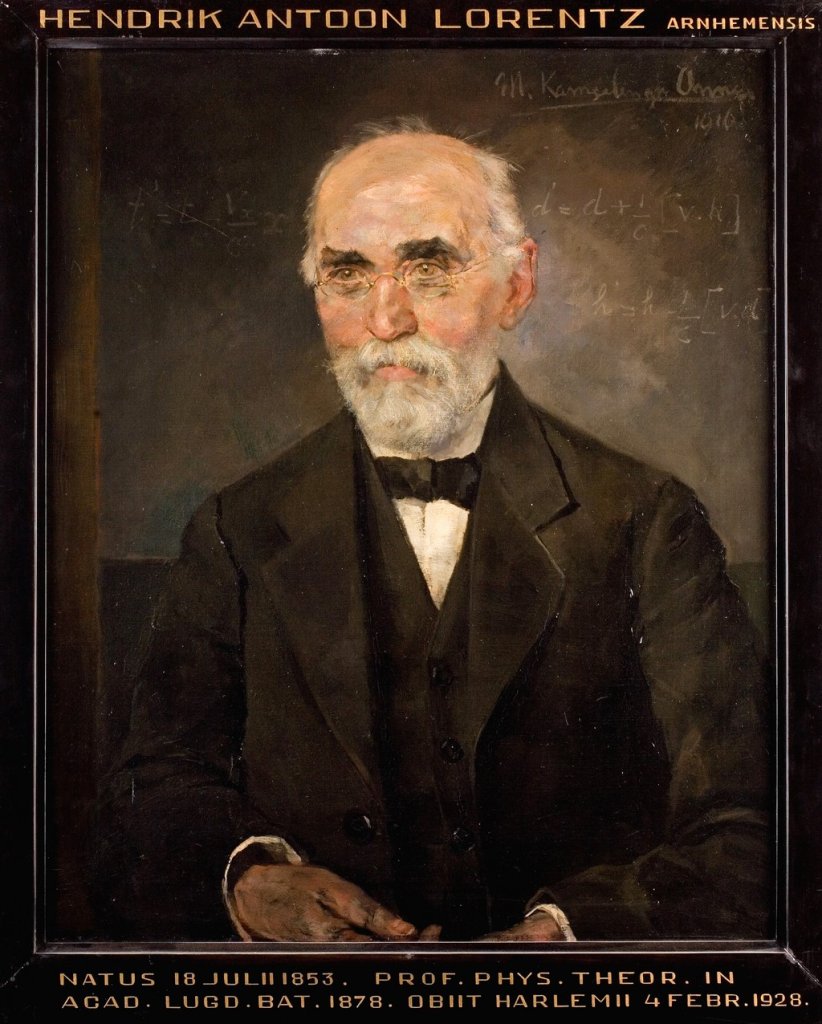
To investigate the effects of the closure of the Amsteldiep, two gauges were placed on Wieringen in 1919, housed in specially built cottages, one near the port of Den Oever and one in the empty western Wieringen. Between 1805 and 1919, that area was used by the Navy, to serve as a quarantine for sailors with contagious diseases and gunpowder storage. The dike road where the western cottage stands is still called Quarantaineweg.
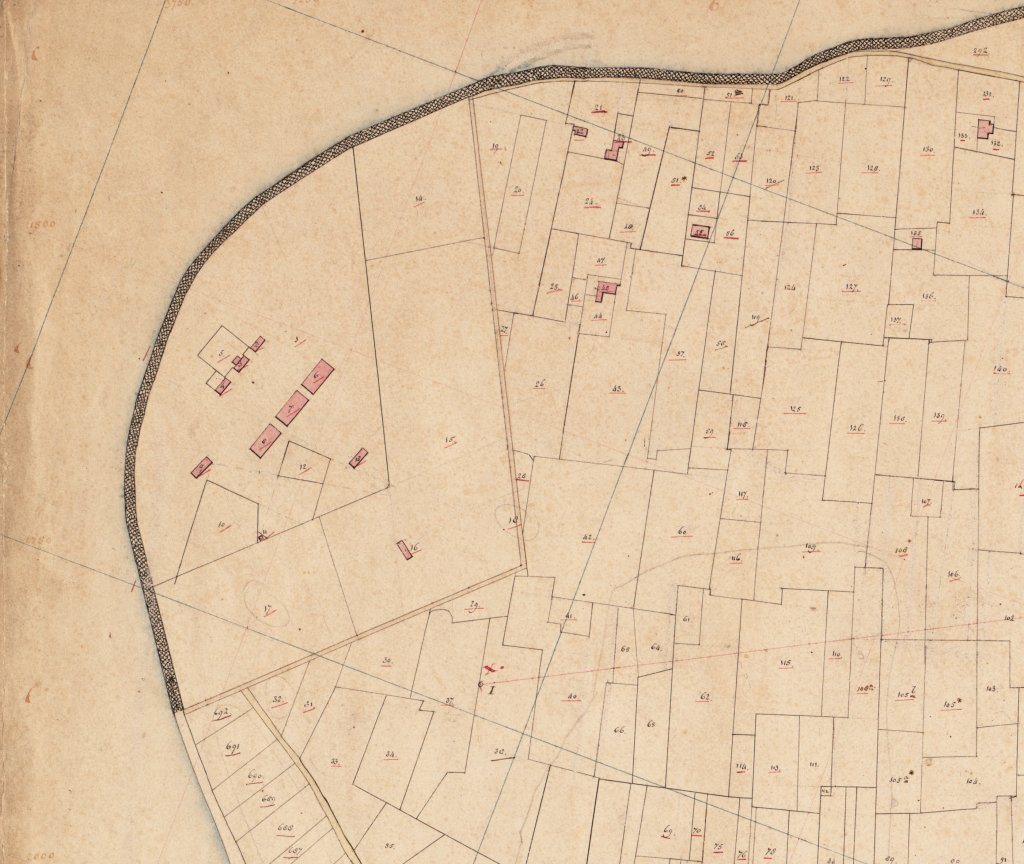
A level gauge is an instrument that measures the position of a particular fluid, such as the water level of a river, relative to the Normal Amsterdam Level (NAP). This is derived from the Amsterdam Peil established in 1684. Led by mayor Johannes Hudde (1628-1704), in order to keep Amsterdam dry, they wanted to establish an average sea level to keep the dikes at the right height and measure the water level.
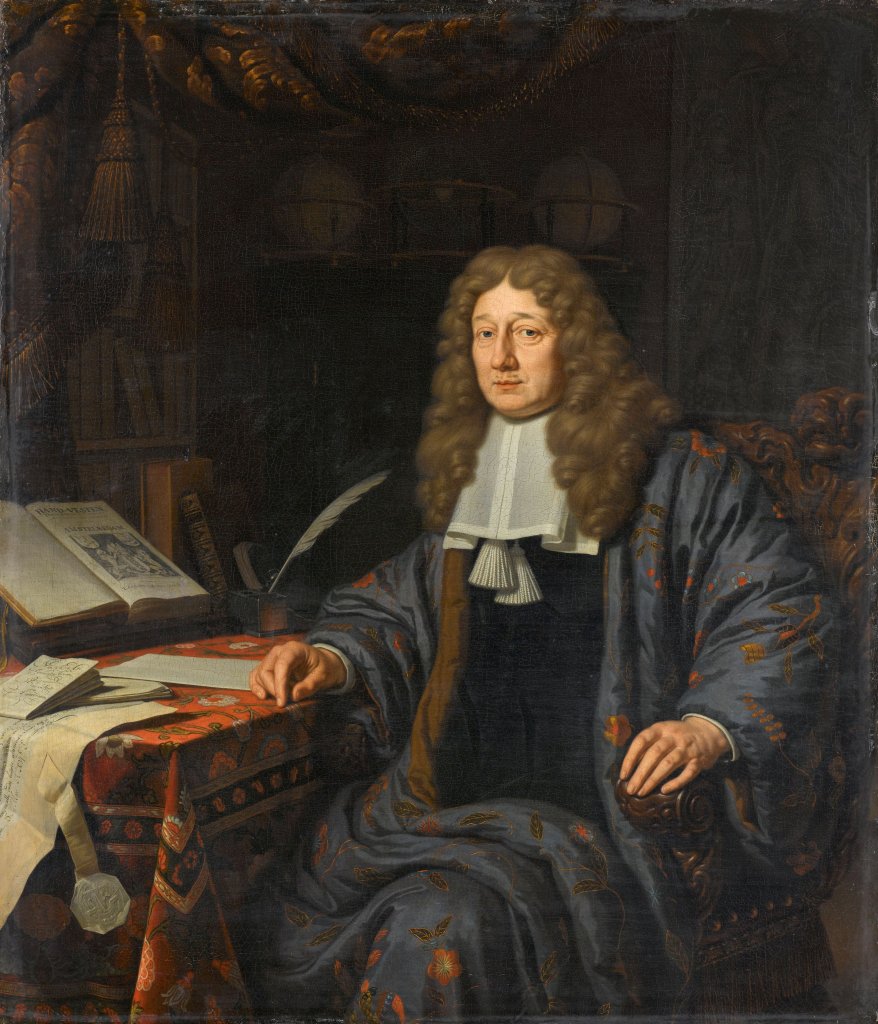
Beginning in 1829, water levels had to be measured throughout the country by means of level gauges that indicated the Amsterdam Level. Therefore, the Department of Waterways and Public Works and the district water boards had level scales set up and level marks installed throughout the country. Starting in 1858, a new type of gauge was applied, the registering gauge, which was placed in special gauge houses. The Wieringer gauge houses are in this tradition.
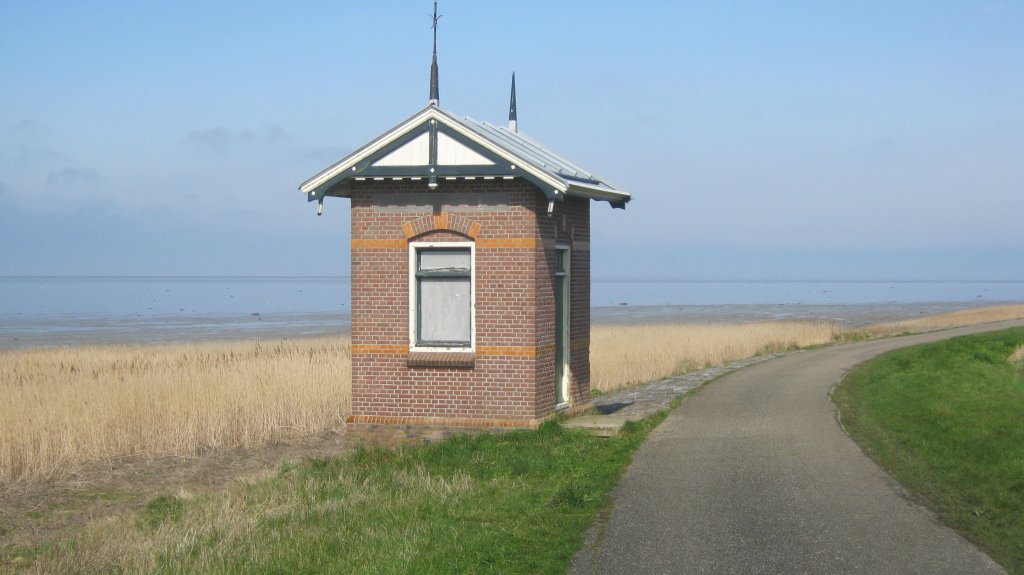
In the gauge houses, people used a gauge recorder. In a well under the building, a float floated on the seawater, connected to a pen that automatically wrote the water level in relation to NAP on a roll of paper. The roller was driven by a clock and had to be replaced every 24 hours. The water levels were reported daily to the Department of Public Works in The Hague.
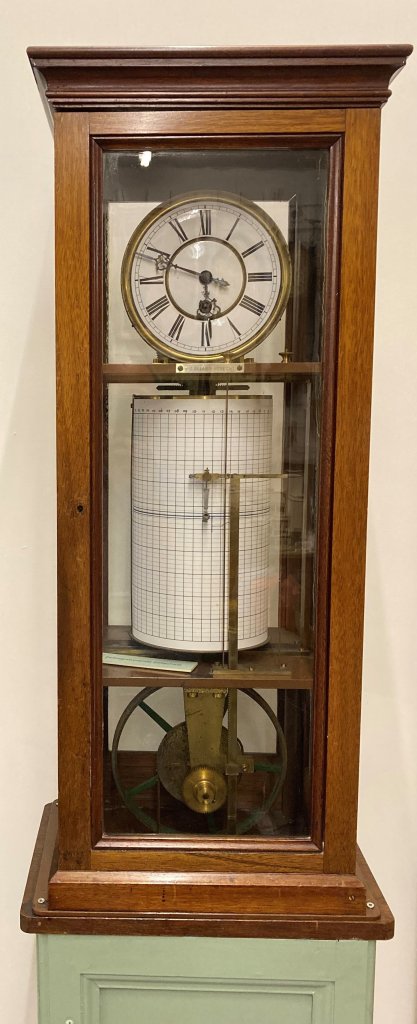
Incidentally, for a quick glance, a level scale was also attached to a wooden post on the dike, which is still present. The gauge house fulfilled its original purpose until after the Zuiderzee was closed off. In the following years, the mud flats near Westerland silted up and the current channels moved, making it difficult to measure the water level there.
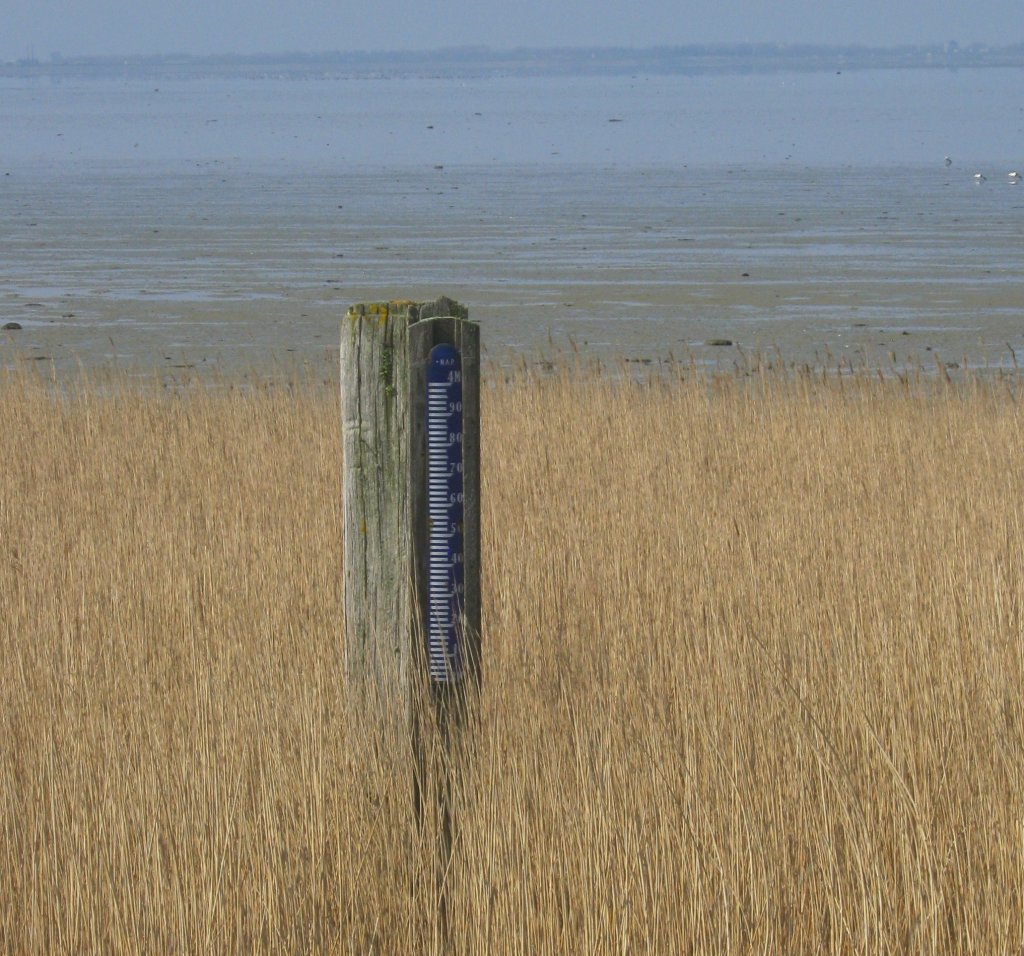
In 1939, the level recorder was removed from the cottage, which was then used as a shelter for levee guards during heavy storms. The handsome little building with its distinctive bands of orange glazed brick is now a monument. A bluestone frieze with the inscription "State Sounding Scale" recalls its purpose, the wind vane of ornamental ironwork bearing "1919" indicates the year of construction. As a whole, it recalls the time of the Zuiderzee Works.
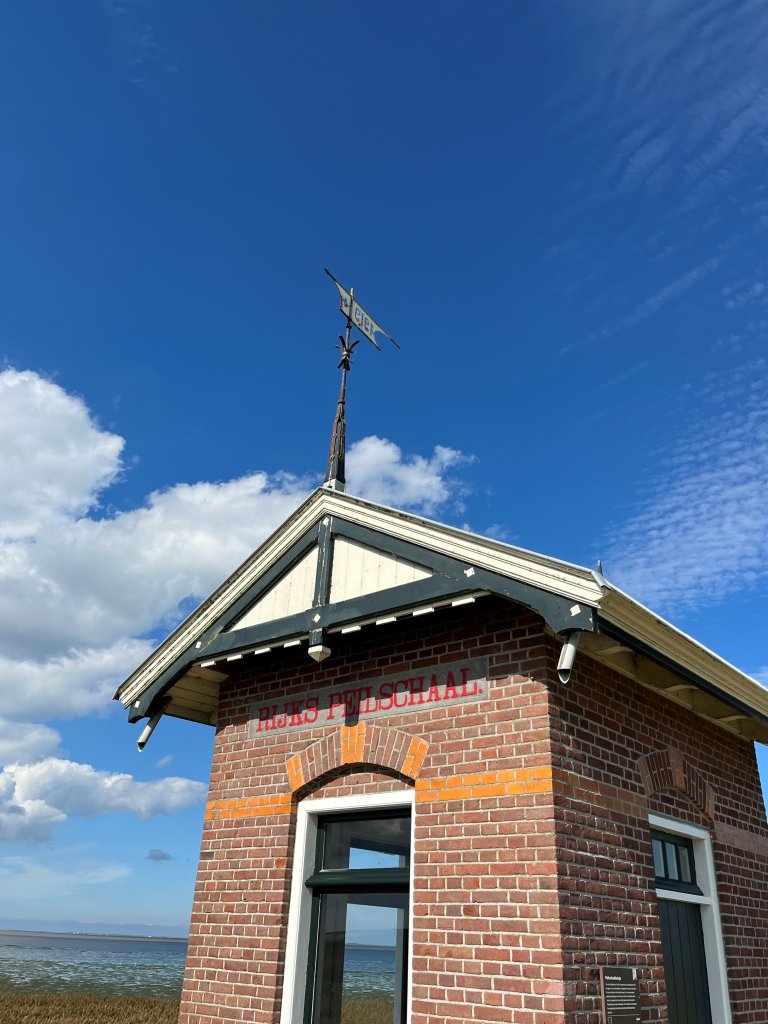
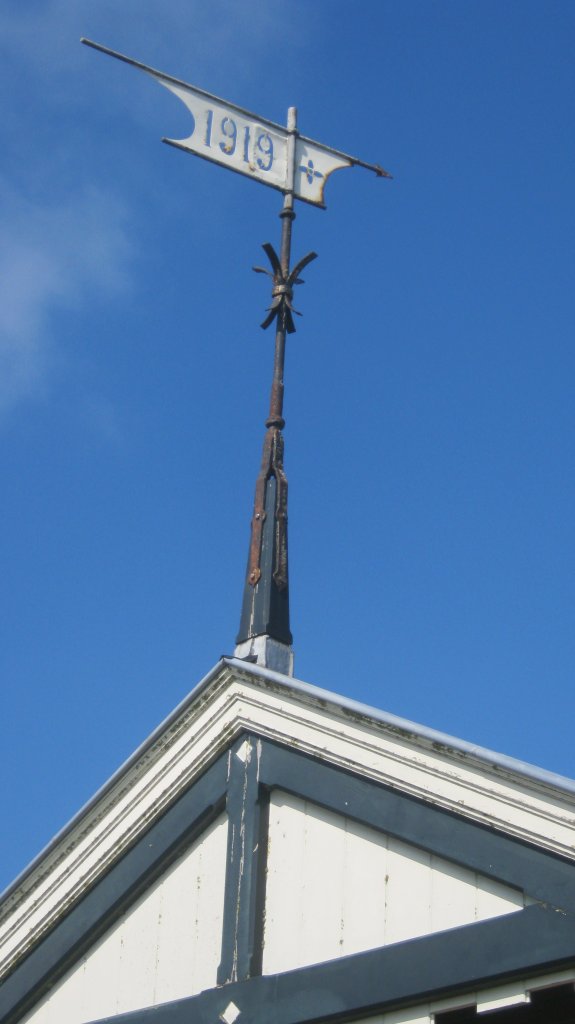
Additional
- Those who want to cycle past the gauge house at Westerland must take a slight detour compared to the major hiking or cycling routes. This applies, for example, to this bicycle route through the Wieringermeer and across Wieringen.
- The Den Helder-Harlingen section of the Coastal Route will also be nearby.
- Two smaller hiking trails with De Haukes as their starting point do pass through. The Damroute and the Westerkliefroute.